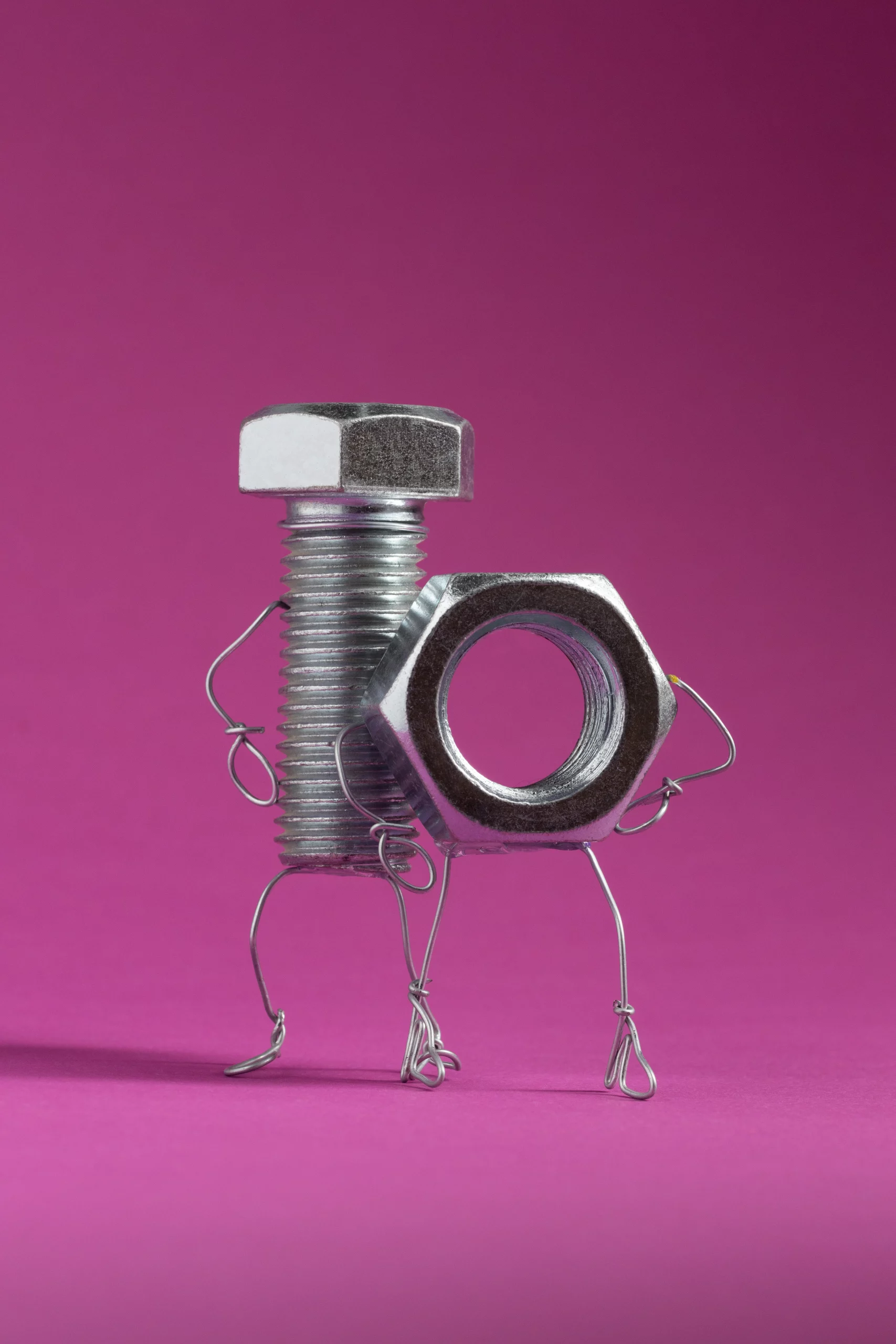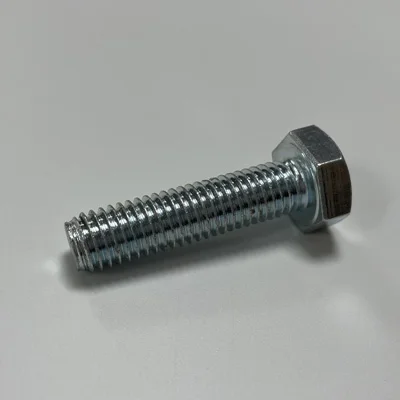caTEGORIES
Tags
How to Determine the Right Torque Settings for Bolts and Nuts in Industrial Applications

Posted: June 26, 2025
Categories: News
Tags: news
Understanding Torque, Tension, and K–Factor
Torque ≠ Tension, but They’re Interrelated
Torque is the rotational force applied to a fastener, whereas tension is the axial force created in the bolt. While many equate torque with tightness, the relationship is more nuanced. Torque indirectly creates tension, which holds the joint together. However, factors like friction between threads and surface finish play a critical role in the torque-to-tension ratio.
Typical K–Factors for Bolts (Plain, Zinc, Lubricated)
The torque coefficient or “K-factor” bridges the gap between torque and tension. It varies depending on the surface condition and material. For instance:
Plain steel bolts: K ≈ 0.2
Zinc-plated bolts: K ≈ 0.22
Lubricated bolts: K ≈ 0.15
QEWIT offers fasteners in finishes like bright zinc plating, HDG (Hot-Dip Galvanizing), and Elementech coatings—all of which impact torque values. Understanding these coatings helps customers apply the right torque across conditions.
Formulas: T = K × D × P and τ = r × F
The basic torque formula is:
T = K × D × P
Where:
T = Torque (Nm)
K = Torque coefficient
D = Nominal diameter of bolt
P = Preload (axial force)
This equation allows engineers to derive torque values based on desired clamping force, especially useful when sourcing high-grade fasteners like QEWIT’s DIN 933 hexagon head screws (Grade 8.8–12.9) or custom studs.

Step-by-Step: Determining Correct Torque
1. Identify Bolt Grade, Diameter & Material
Begin by checking the bolt’s mechanical properties. Grades such as 4.8, 8.8, 10.9, and 12.9 dictate tensile strength. QEWIT’s catalog includes fasteners across this entire grade range, in materials like carbon steel, stainless steel (A2/A4), and brass.
For example, an M10 bolt in Grade 8.8 has a typical tensile strength of 800 MPa and proof load of 640 MPa.
2. Gather Material Properties (Proof/Yield Strengths)
Next, determine the preload. Generally, engineers target 75–90% of the bolt’s proof load to maintain a safe clamping force without yielding the fastener.
3. Calculate Preload Required for Clamping
Use preload = proof load × tensile stress area. Reference DIN charts or standard bolt tables to find the stress area. For instance, M10 bolt’s tensile stress area ≈ 58 mm².
4. Apply Torque Formula Considering Friction
Plug values into T = K × D × P using appropriate K-factor. For lubricated bolts or those with zinc flake coating from QEWIT, K may be adjusted downward due to reduced friction.
5. Use Charts & Calculators for Verification
Online calculators and torque tables—like those offered by KENENG or DSM-Messtechnik—help double-check your results. QEWIT’s technical support can also provide recommendations based on specific product specs or test results.
6. Validate with Tension Indicating Devices for Precision
For critical applications, validation tools like bolt tension calibrators or ultrasonic measurement can confirm if applied torque produces intended preload. QEWIT’s in-house testing labs (with torque meters, tensile testers, and salt spray chambers) provide quality assurance across all batches.
Case Studies & Examples
Industrial Structure Bolts (A325/A490)
Structural applications, such as steel frames and bridges, demand specific torque for compliance. For example, ASTM A325 bolts often require 295 Nm for a ¾” bolt. QEWIT supplies comparable high-strength fasteners that meet these global standards, complete with 3.1 certification and PPAP documentation on request.
Hydraulic & Pneumatic Torque Wrench Usage
In assembly lines, hydraulic torque wrenches ensure repeatability and efficiency. These tools are often used to tighten QEWIT’s heavy-duty bolts in manufacturing plants across Europe and Southeast Asia.
Angle Torque Method for Consistency
Beyond static torque, angle-controlled tightening involves turning the bolt by a specific degree after a snug torque. This method reduces variability from friction and is increasingly adopted in automotive and precision assemblies.
Advanced Considerations
Effect of Lubricants and Coatings
Lubrication—intentional or incidental—can decrease friction and affect torque. QEWIT’s fasteners, available with optional thread patches, mechanical galvanization, or zinc flake coatings, may need torque recalibration. Always consult the supplier’s technical sheets.
Impact of Thread Engagement & Base Material Strength
Fastening into aluminum, brass, or softer materials may limit torque due to lower bearing strength. In such cases, QEWIT recommends using nylon insert nuts (DIN 985/982) or flanged nuts to distribute load more effectively.
Emerging Tech: Digital Torque Verification
Modern torque tools can store tightening data, offer real-time feedback, and connect to ERP systems. Paired with QEWIT’s traceable QC processes, this ensures documented quality in critical fastener assemblies.
Best Practices & Quality Assurance
Regular Calibration (ISO 17025)
Ensure torque tools are calibrated every 6–12 months. Partnering with ISO 9001 certified suppliers like QEWIT ensures your parts meet dimensional and mechanical requirements every time.
Documentation: Torque Records & Traceability
For sectors like energy or transportation, keeping torque logs is vital. QEWIT supports this by supplying serialized packaging and batch-specific test certificates for every shipment.
When to Choose Torque vs. Tension Methods
Use torque-based methods for general assembly and maintenance. Choose tension-based tightening for mission-critical joints—especially when joint failure poses safety risks.
Conclusion & Practical Takeaways
Figuring out the right twist for bolts and nuts mixes smart science with real job needs. Whether you’re picking a bunch of DIN 934 hex nuts, checking how slippery oil affects threads, or grabbing M12 stainless bolts for outdoor work, the perfect twist keeps fasteners strong and jobs safe. Teaming up with pros like QEWIT gets you trusty parts. They also share cool know-how and lab help. This way, you get steady, awesome results for all kinds of factory work.
FAQs
Q1: Can the same torque values be used across all fastener coatings?
A: No. Coatings like zinc, zinc flake, or lubrication reduce friction and require adjusted torque values. Always refer to the supplier’s torque recommendations for coated fasteners.
Q2: How does QEWIT ensure torque reliability in its fasteners?
A: QEWIT performs batch testing using torque meters, tensile testers, and provides 3.1 certifications, ISIRs, or PPAP documents upon request. Their fasteners are ISO 9001–certified and traceable by lot.
Q3: What tools are best for applying correct torque in industrial settings?
A: Torque wrenches (manual, digital, hydraulic) and angle torque tools are common. For high-volume or critical assemblies, use calibrated digital torque tools and monitor results with tension-check devices.


